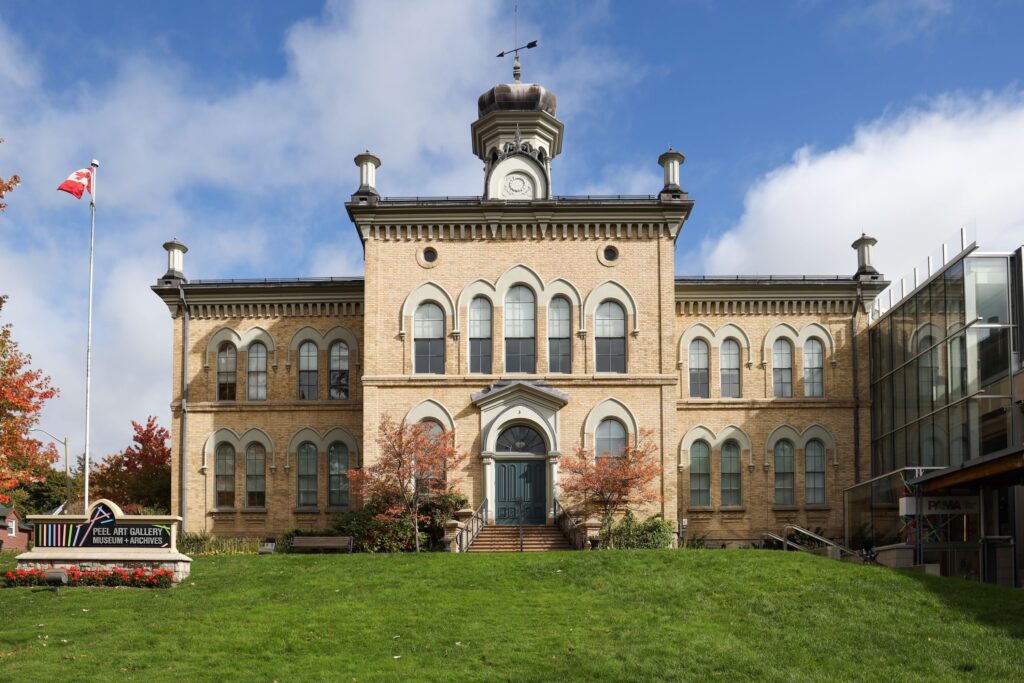Beyond its breathtaking landscapes and friendly people, Canada has quietly become a center for innovation. From life-changing medical breakthroughs to everyday conveniences, Canada is not just known for its maple syrup and hockey.
Let’s explore the incredible contributions that Canadians have made to the world with this long list of inventions. You’ll be sure to recognize a few everyday items on this list!
Download Canoo to access free museums and science centres where you can learn more about Canadian inventions and scientific wonders!
Peanut Butter in a Nutshell
Meet the PB Inventor Marcellus Gilmore Edson
Marcellus Gilmore Edson was a chemist and pharmacist who got a patent in 1884 for his new production of a peanut paste, which he named peanut candy.
Edson’s patent application to the United States Patent Office included his method for making peanut candy by roasting and grinding peanuts between surfaces heated to 100° Fahrenheit. Once cooled, the product looked a lot like butter. He then added sugar (usually used for candy) and this led to the name: peanut candy.
However, there is no evidence that Edson’s peanut candy was commercially sold or marketed as peanut butter. But by the early 1900s, peanut butter had become a staple in Canadian households. Edson played a crucial role in the early development of this popular food spread now found all over North America.

Fun Fact
According to the Peanut Bureau of Canada, 79% of Canadian households report peanut butter consumption at least once per week.
The Fibreglass Goalie Mask
Invented by Former Montreal Canadiens Goaltender: Jacques Plante
After getting hit in the face by pucks over and over again, former goaltender Jacques Plante invented the fibreglass goalie mask in 1956. Initially, he only wore the mask in practice, but during a game with the New York Rangers in 1959, he realized his mistake in leaving the mask in the changing room. A flying puck hit him in his nose and broke it.
After being treated in the changing room, Plante returned to the ice with his nose still bleeding and wore the mask to protect his injury. Although his coach didn’t like the sensation it caused, the team won, and Plante led the Canadiens to an 18-game winning streak! This fibreglass goalie mask later became common in all hockey games and helmets with full masks are now standard equipment in the sport around the world.
The Egg Carton
Simple, but Essential
This story starts in the 1900s when newspaper publisher Joseph Coyle overheard an argument between the hotelier and the deliveryperson about the delivery of broken eggs in British Columbia. During that time, eggs were put in one basket to move from one place to another. Coyle thought there had to be a solution to save the eggs. In 1911, he crafted a carton of individual slots so the eggs would not hit each other and break in transit. Over a century later, his creation remains largely unchanged because it has been so effective from its inception!

The Paint Roller
Invented in Toronto by Norman Breakey
The paint roller, a time-saving hero in the world of home decorating, owes its origin to the innovative mind of Canadian inventor Norman Breakey.
He covered a cylinder with absorbent material, put it on a handle, soaked it in paint. And voila—a quick and easy way to change wall colours. With the aid of fabric supplier Tom Hamilton, who provided material and guidance, Breakey’s invention revolutionized painting.
According to his grandson, Breakey obtained a patent for his invention. However, he passed away before he could take legal action against imitators.
McIntosh Apples
An Accident that Changed the World
The story of McIntosh apples began over 200 years ago when a young man named John McIntosh left New York in 1796, settling near Iroquois, Ontario. While clearing the forest, he stumbled upon some apple seedlings. After transplanting them, all died except one. This special tree produced tender apples with a perfect mix of tartness and sweetness.
John’s son, Allan McIntosh, learned how to clone these trees by grafting stems from the original, which eventually grew into the first McIntosh Red Apple Orchard. The McIntosh Apple became widely known and loved, with Allan, a travelling preacher, spreading the word about their exceptional fruit. The original McIntosh tree produced apples until a fire damaged it in 1909 or 1910, and it fell. Today, the legacy of the McIntosh Apple continues across Canada and around the world. But the birthplace of this beloved fruit will always be Ontario.

The First Electric Wheelchair
Invented by One of Canada’s Most Accomplished Inventors: George Klein
George Klein was born in Hamilton, Ontario in 1904. He was a great student who blended academics with creativity. And this won his way into the University of Toronto’s Faculty of Applied Science and Engineering. Klein then worked at the National Research Council of Canada in Ottawa for 40 years. During this time, he invented the first electric wheelchair, called The Klein Chair.
It all started with the discovery and improvement of penicillin during World War II. Which increased survival rates from spinal injuries and led to a need for better mobility solutions.
To assist veterans of World War II, Canadian Officer John Counsell requested that the National Research Council and George Klein create a new wheelchair. Klein considered this task to be the most rewarding project of his career. He designed innovative features like the joystick, tighter turning systems, and separate wheel drives. Afterwards, an international effort led to the transfer of the prototype to the United States for mass production.
Klein’s collaborative approach involved healthcare workers, doctors, therapists, designers, engineers, administrators, and patients. It was a unique practice for the time, but brought experts together in support of the patient.
Fun Fact
Today, the prototype wheelchair is kept in the Canada Science and Technology Museum collection. The exhibition highlights Klein’s respect for patient input, emphasizing the importance of collaboration in healthcare innovation. You can visit the Museum with Canoo for free to learn more about this story.
As we wrap up our journey through the pages of Canadian inventions, it’s clear that this nation has left a mark on the world through its inventive spirit. From medical marvels to technological triumphs, these Canadian inventions showcase the impact of a country that continues to shape the future. As we celebrate these achievements, let’s look forward to the next wave of innovations that will undoubtedly emerge from Canada.





